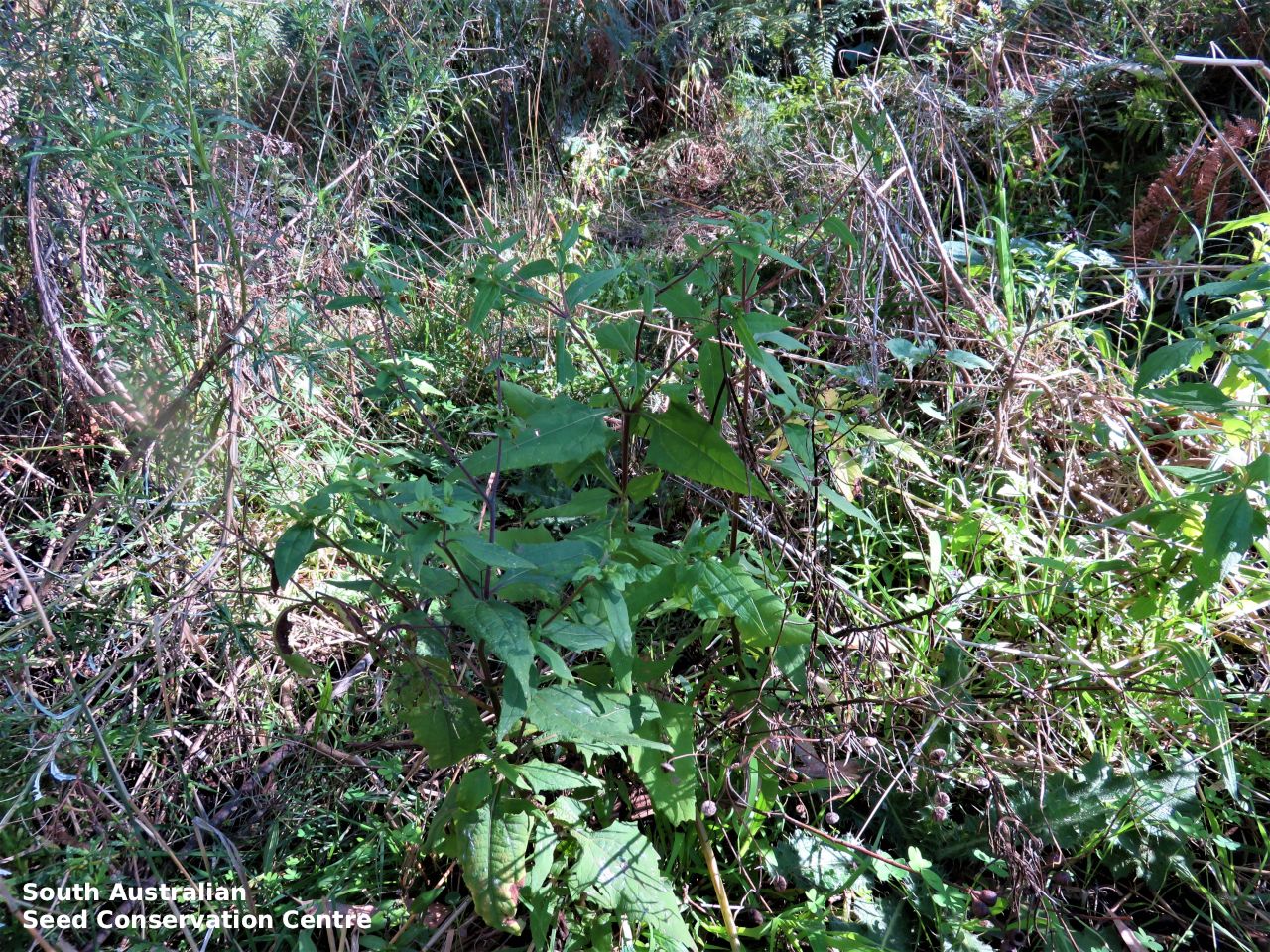
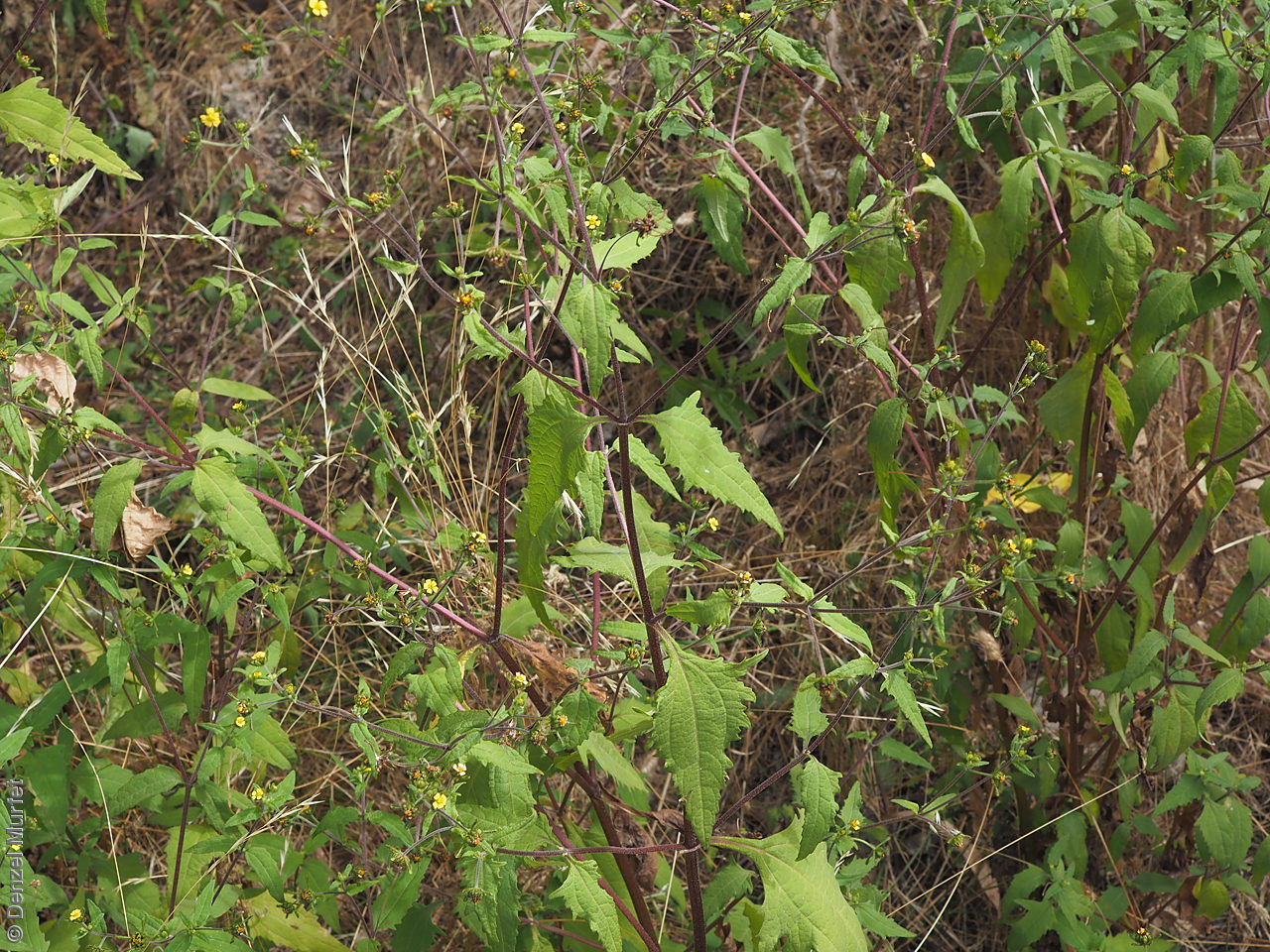
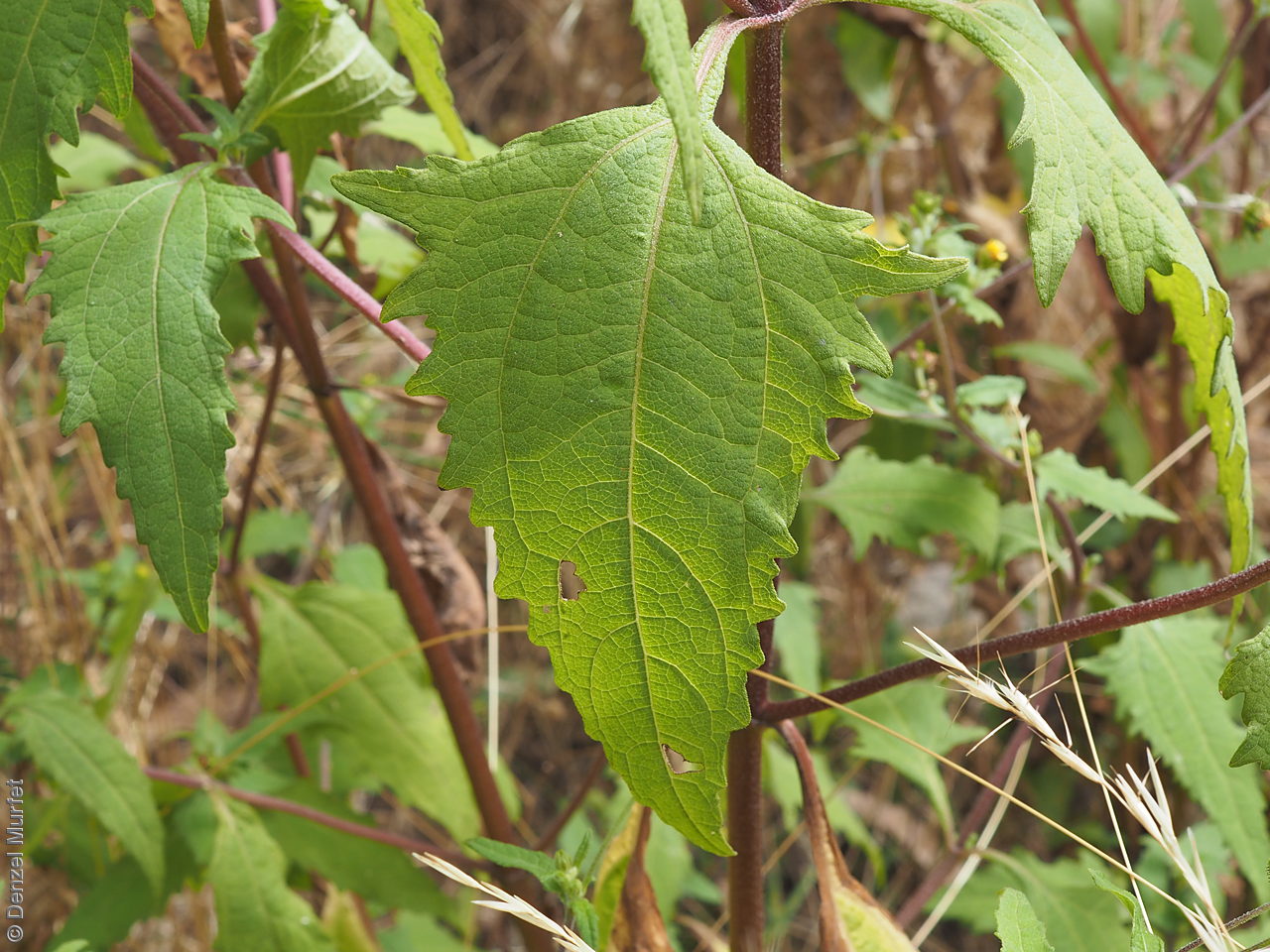
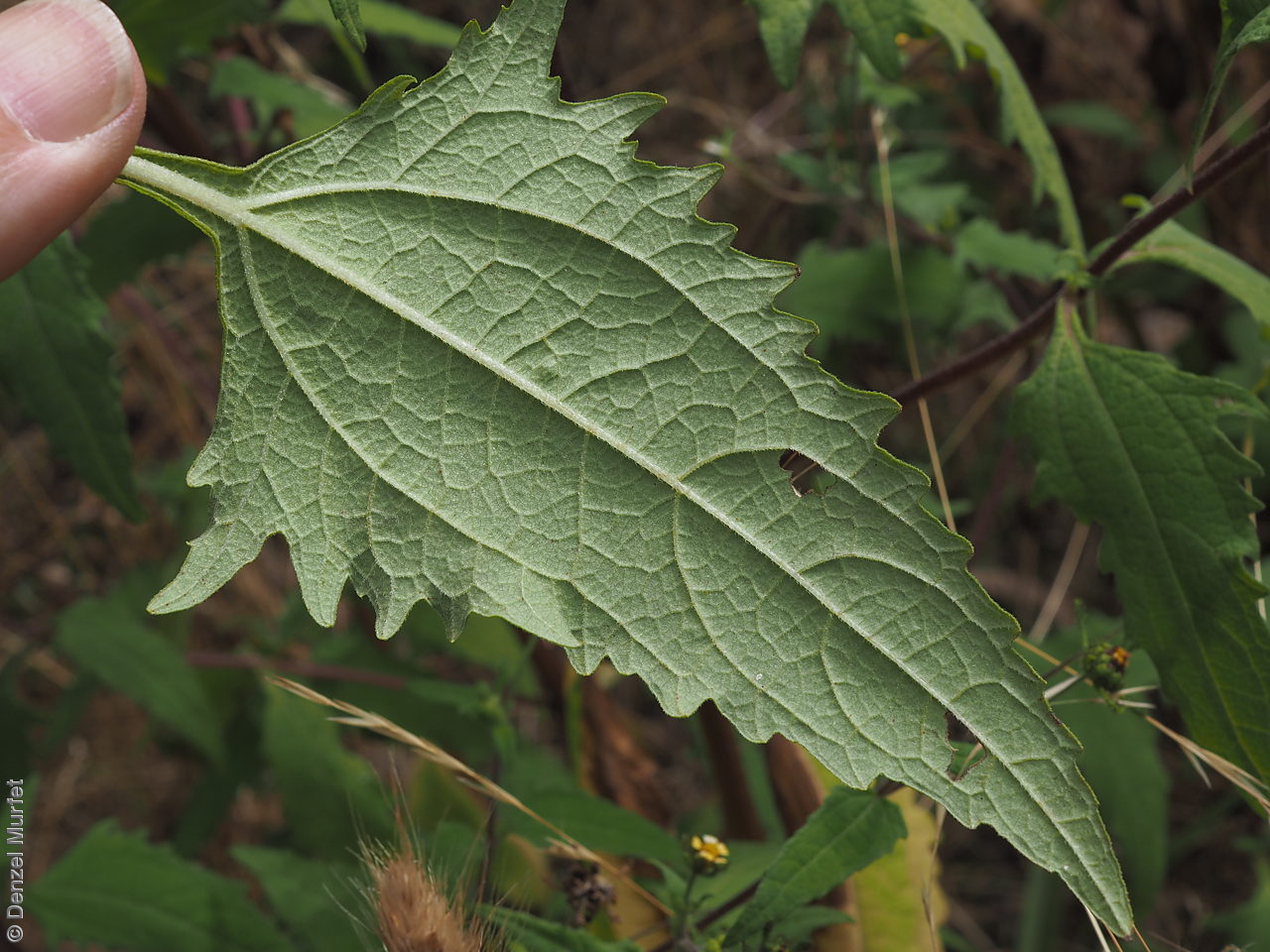
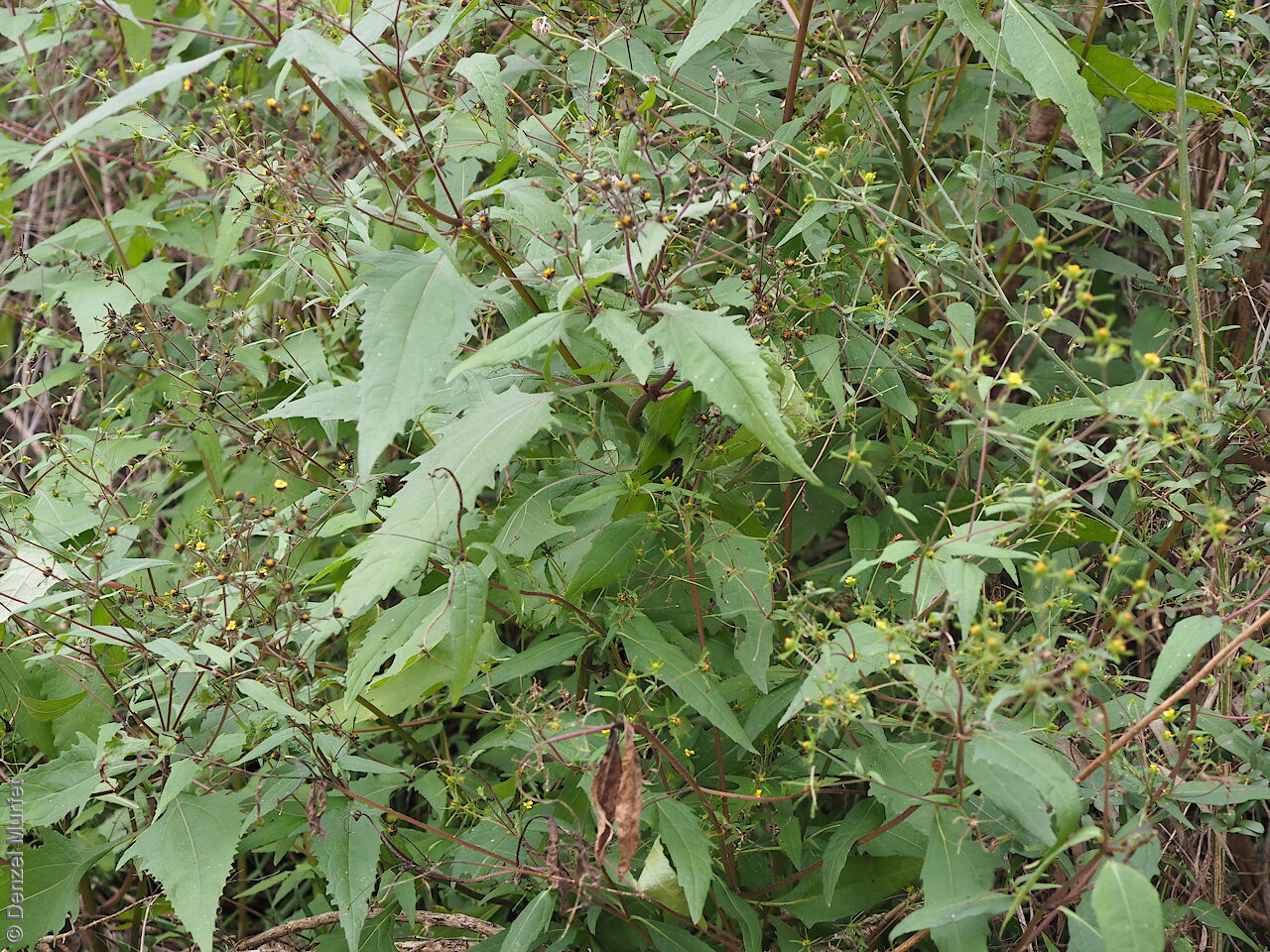
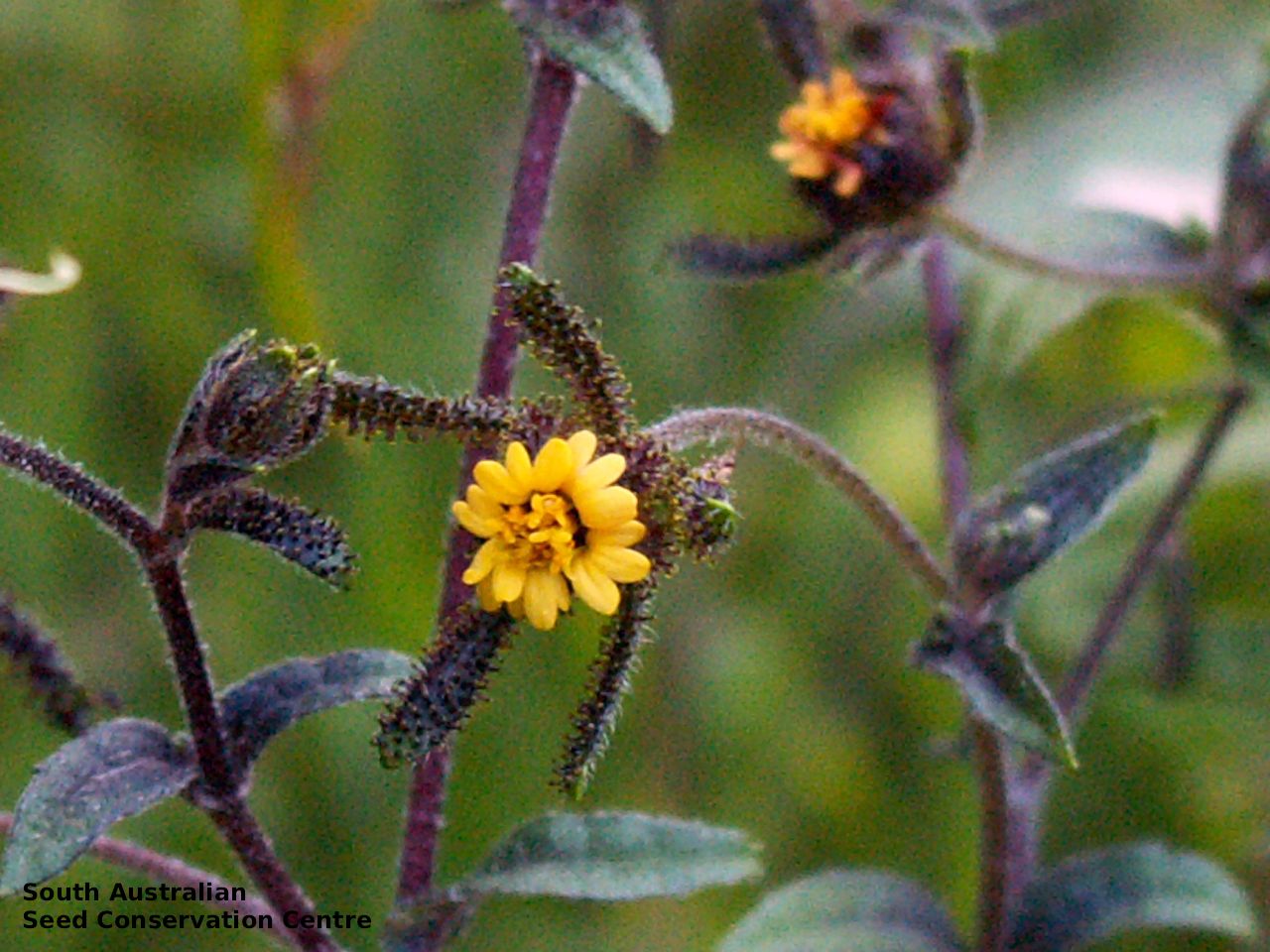
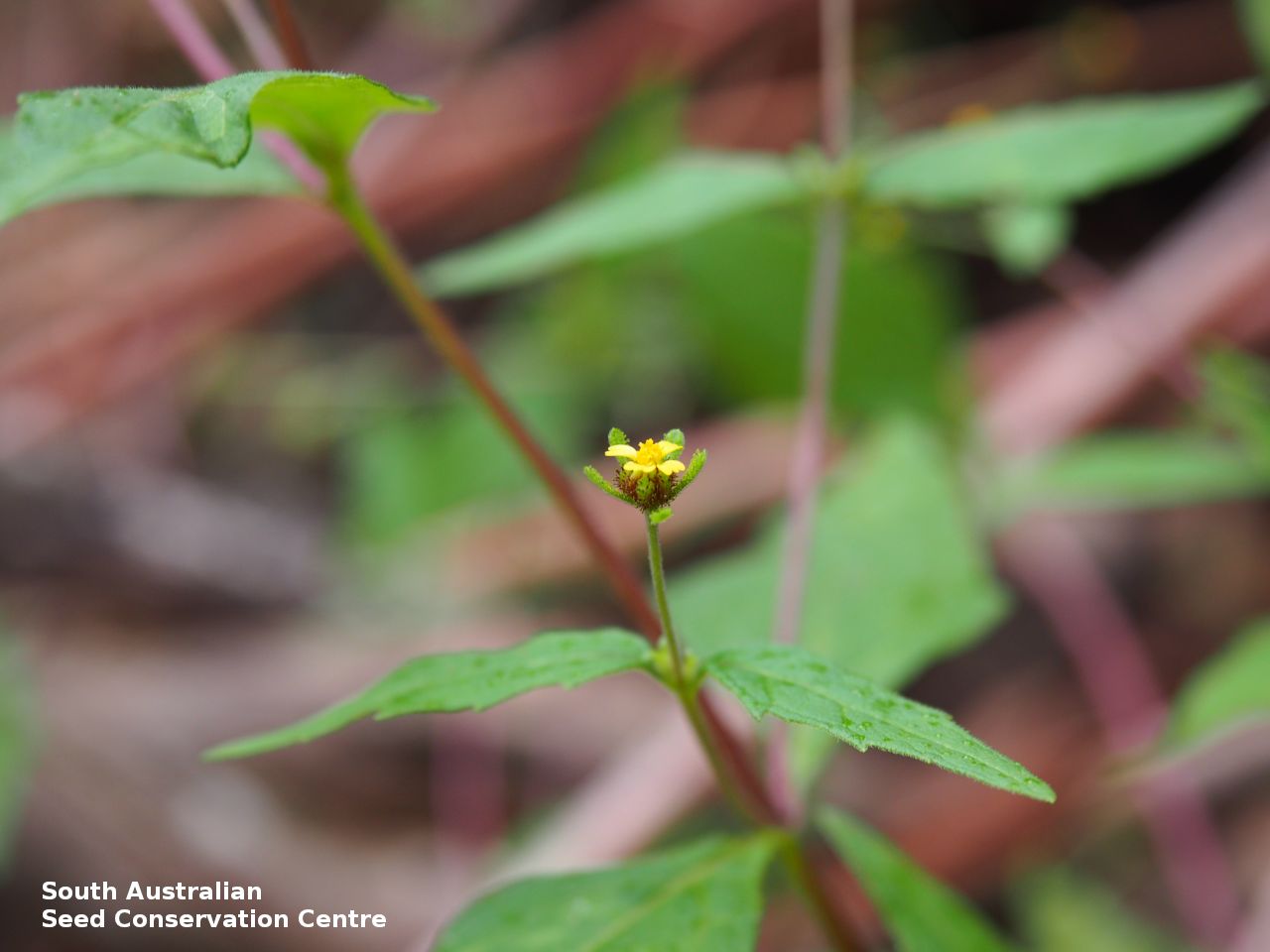
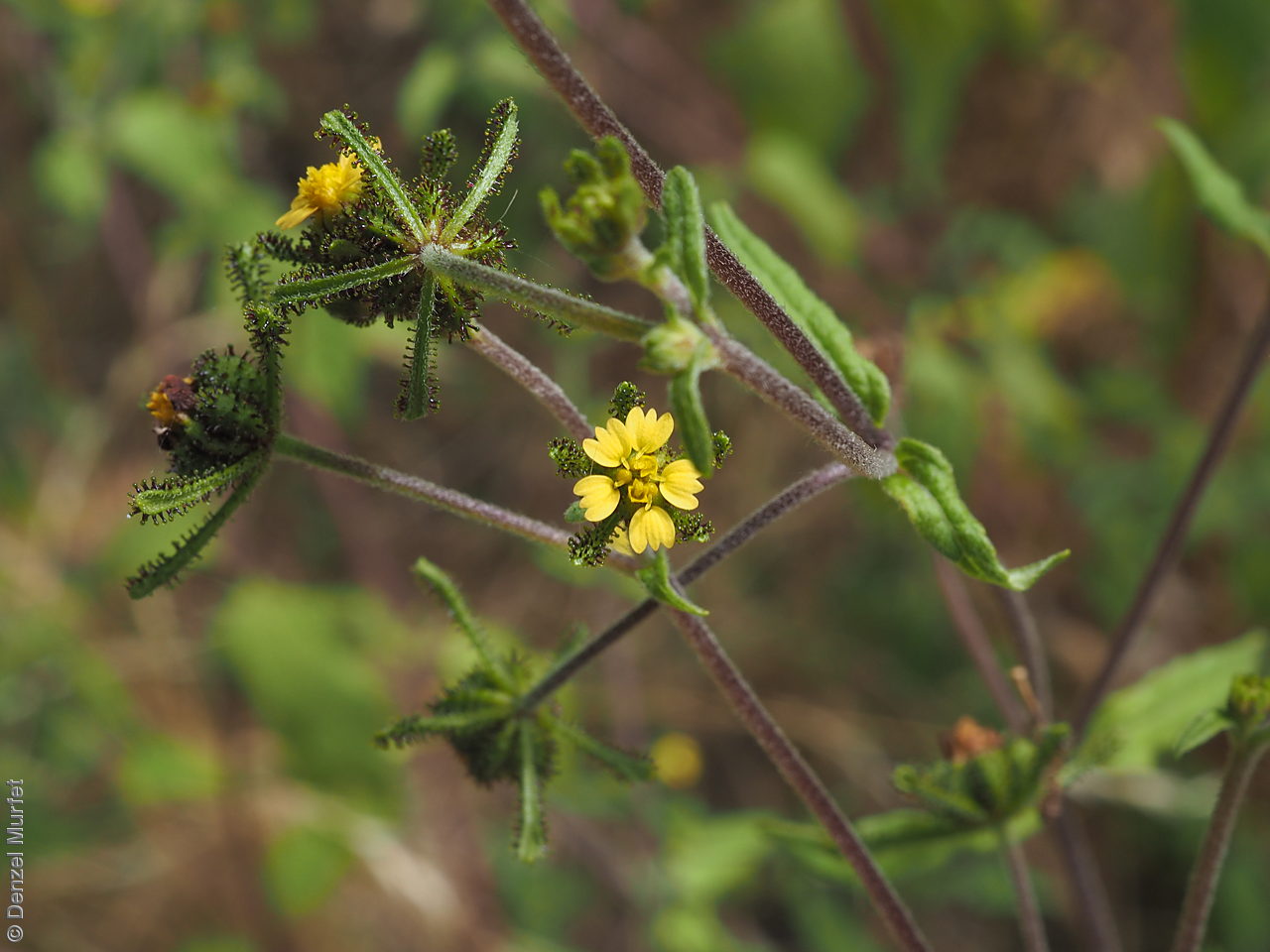
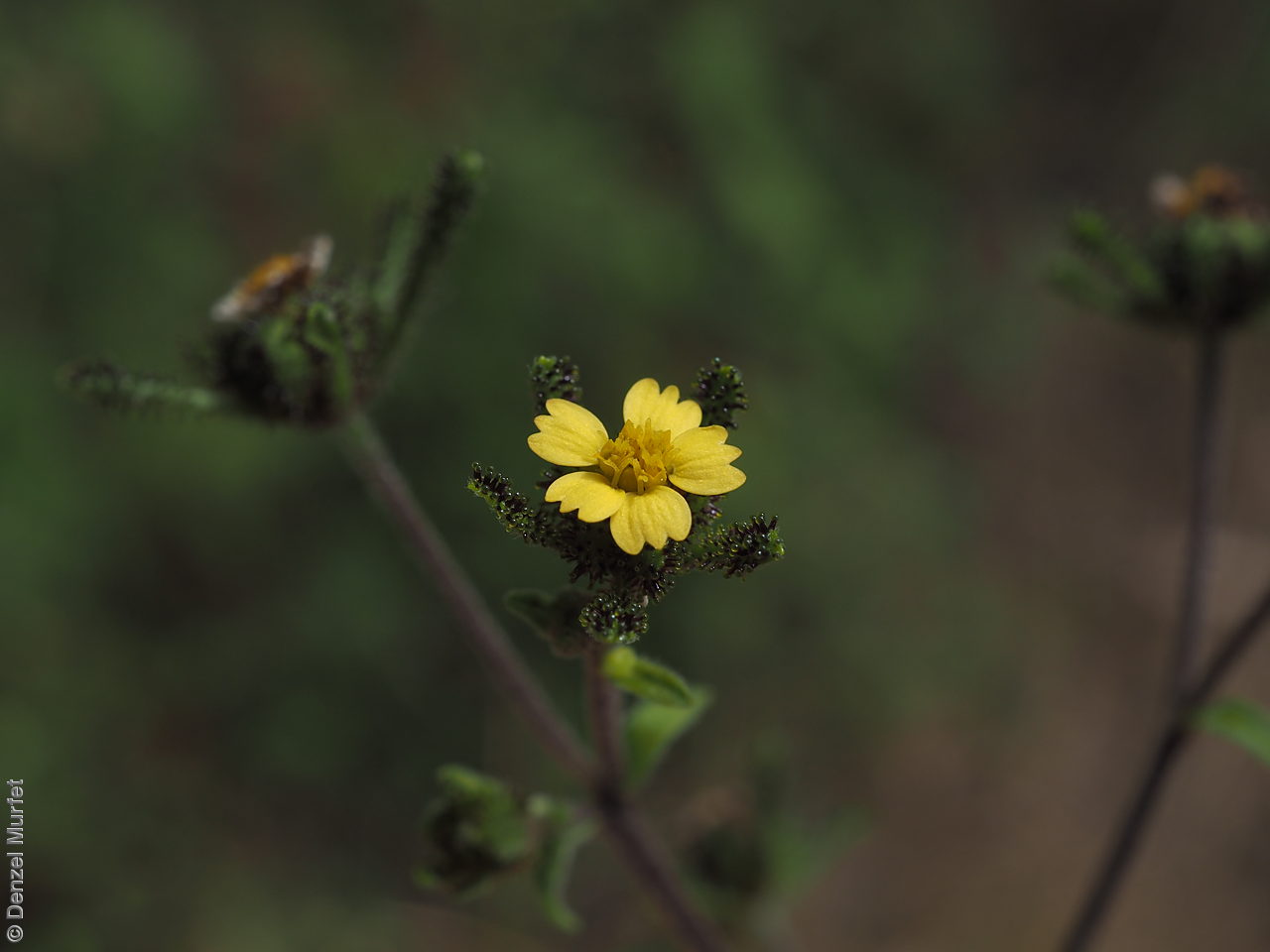
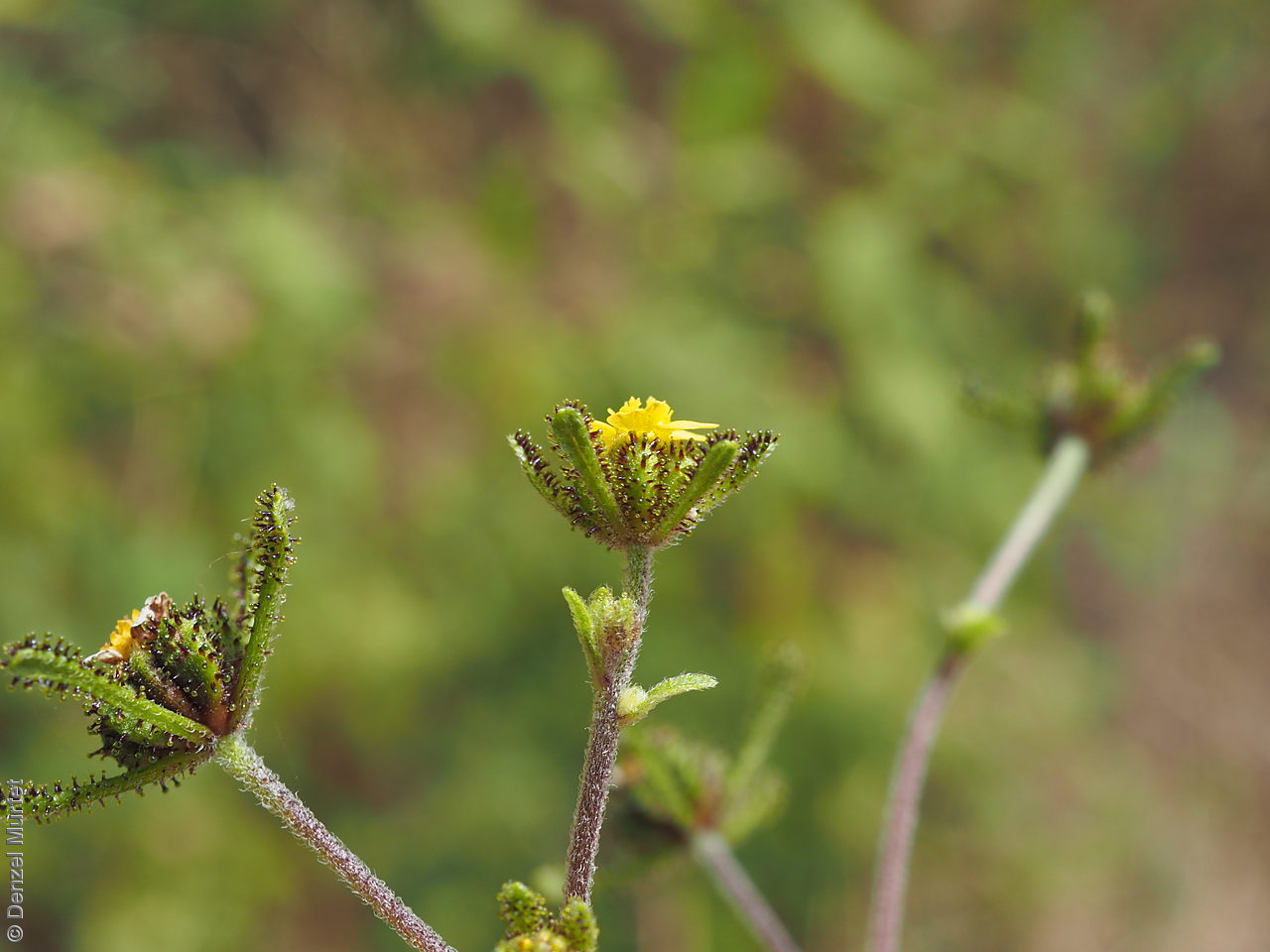
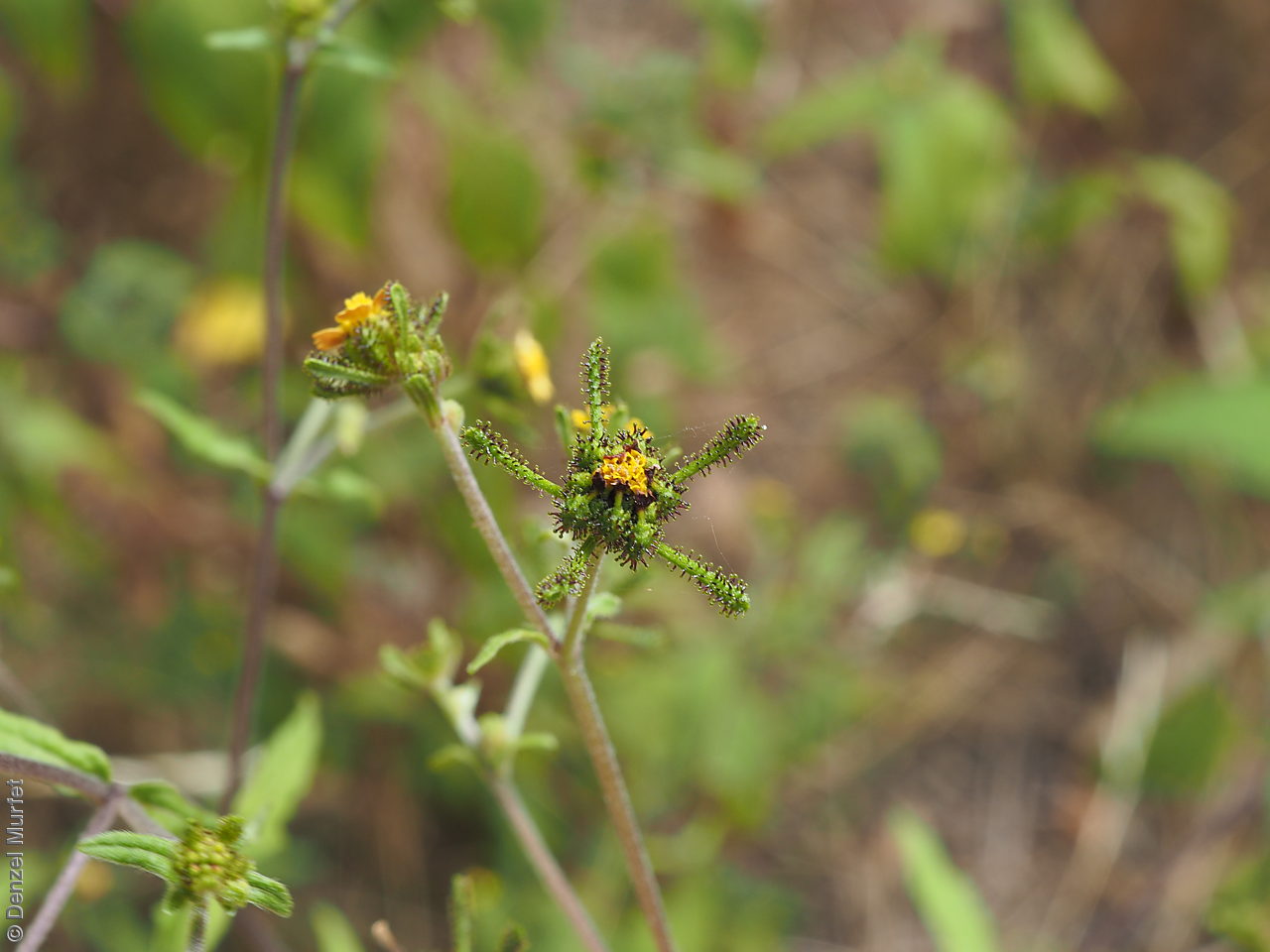
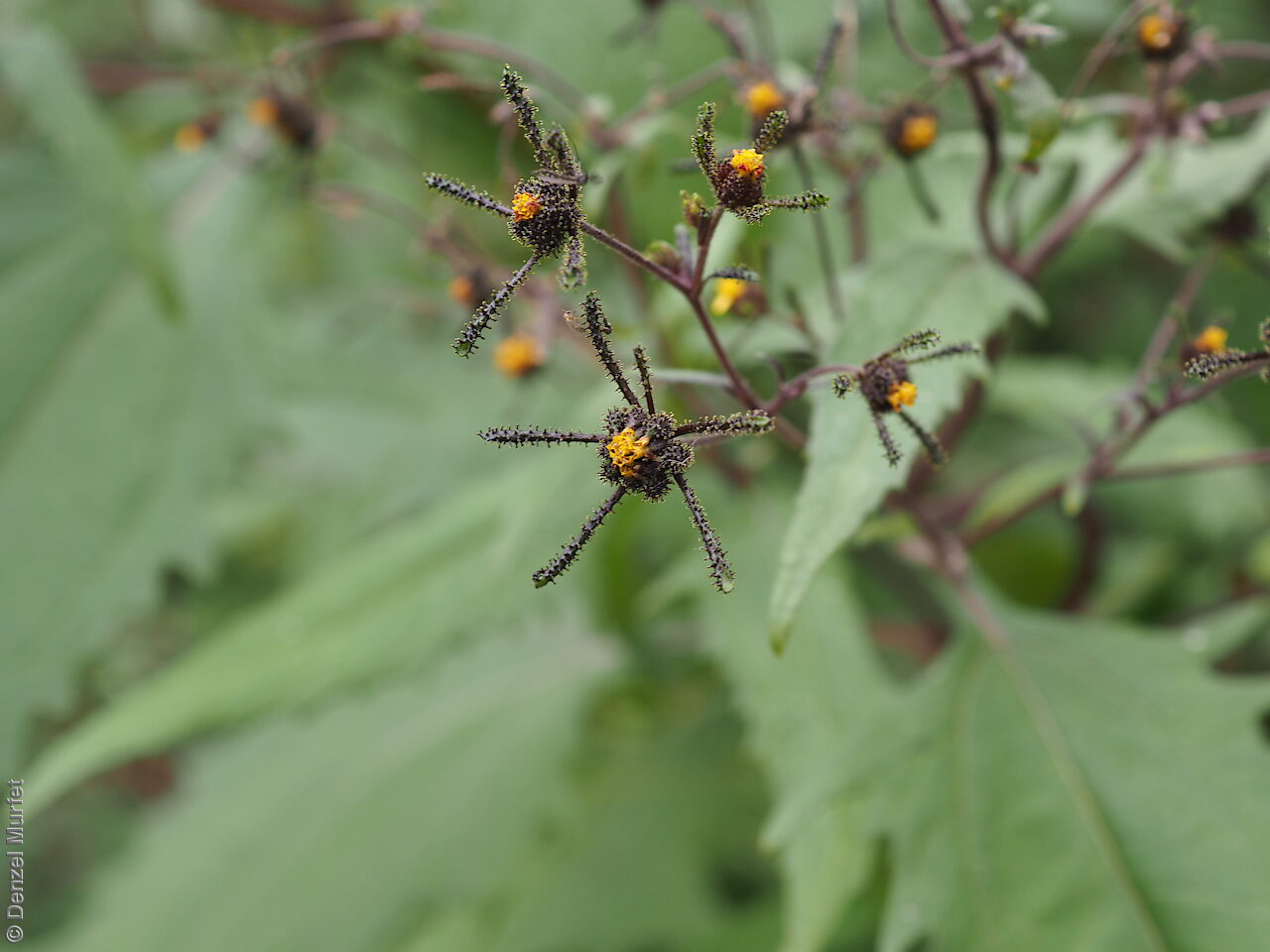
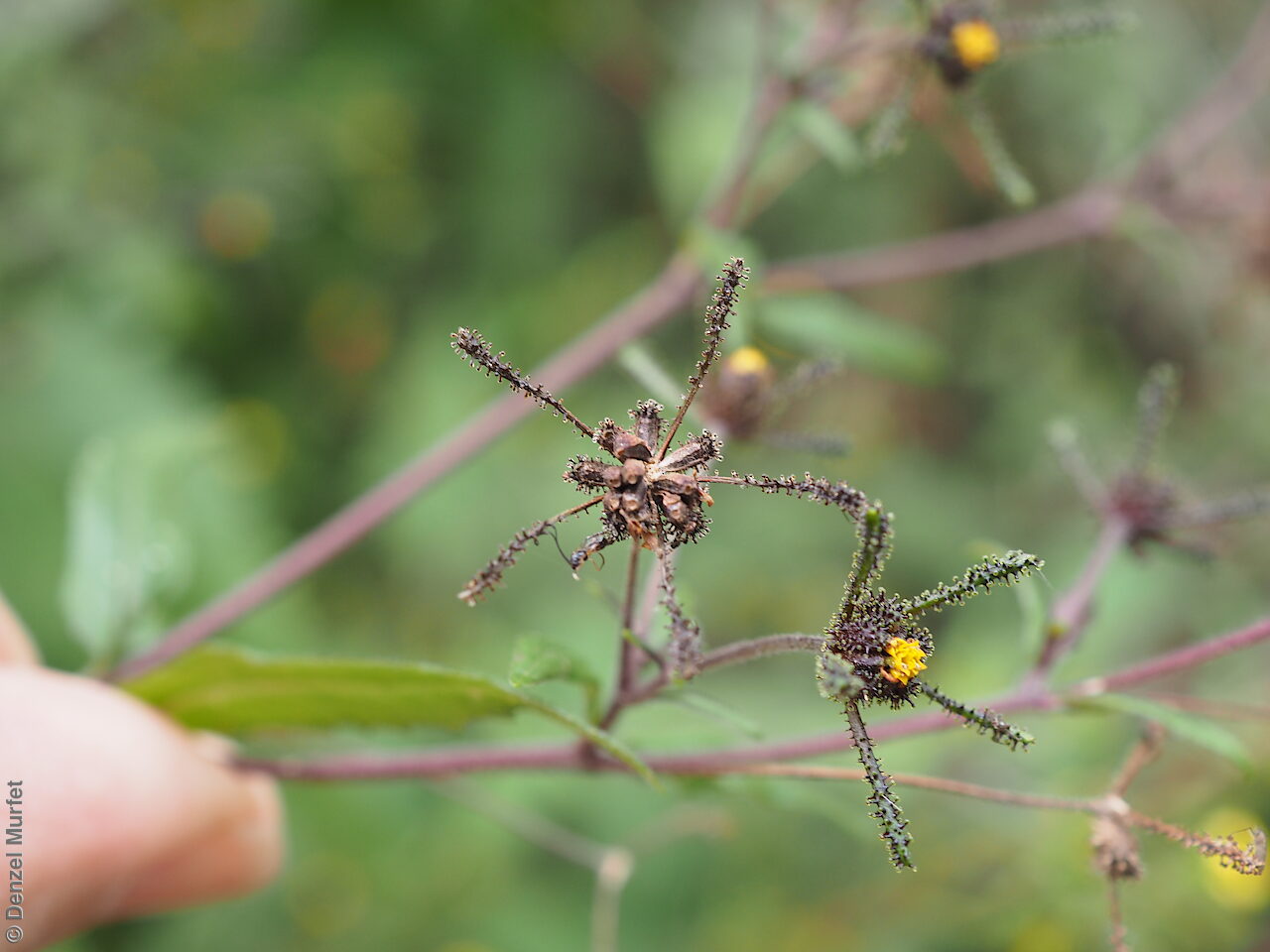
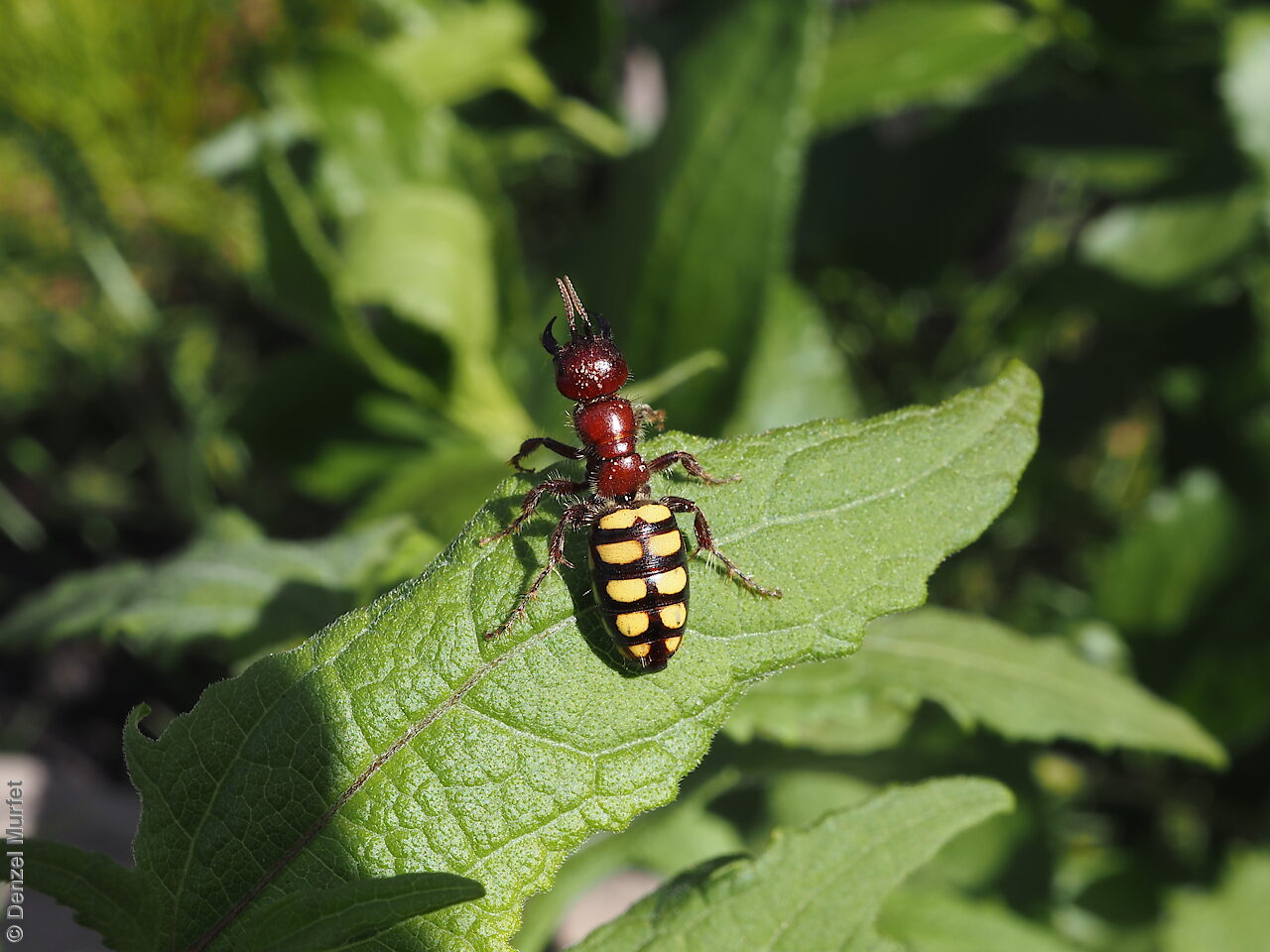
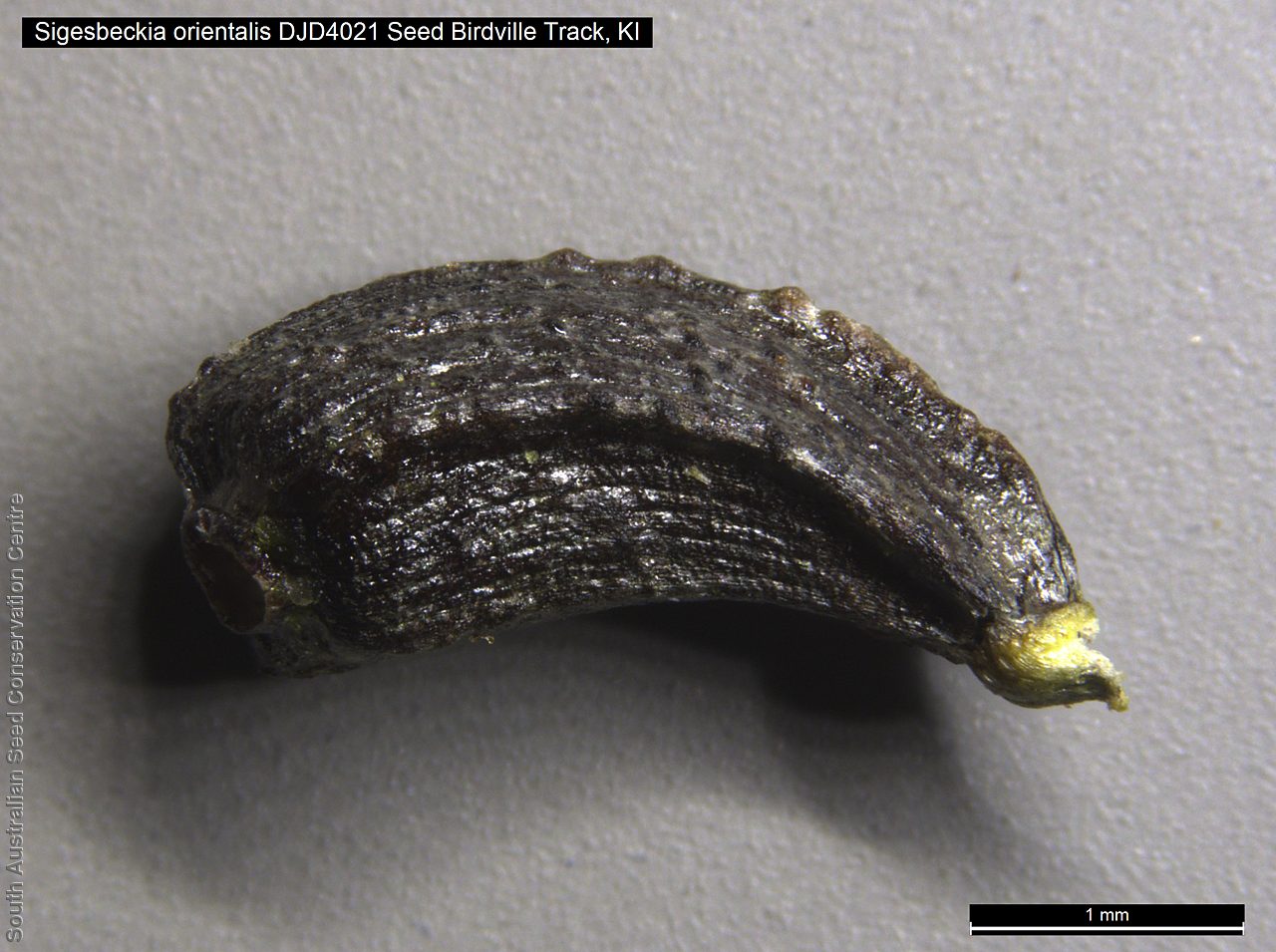
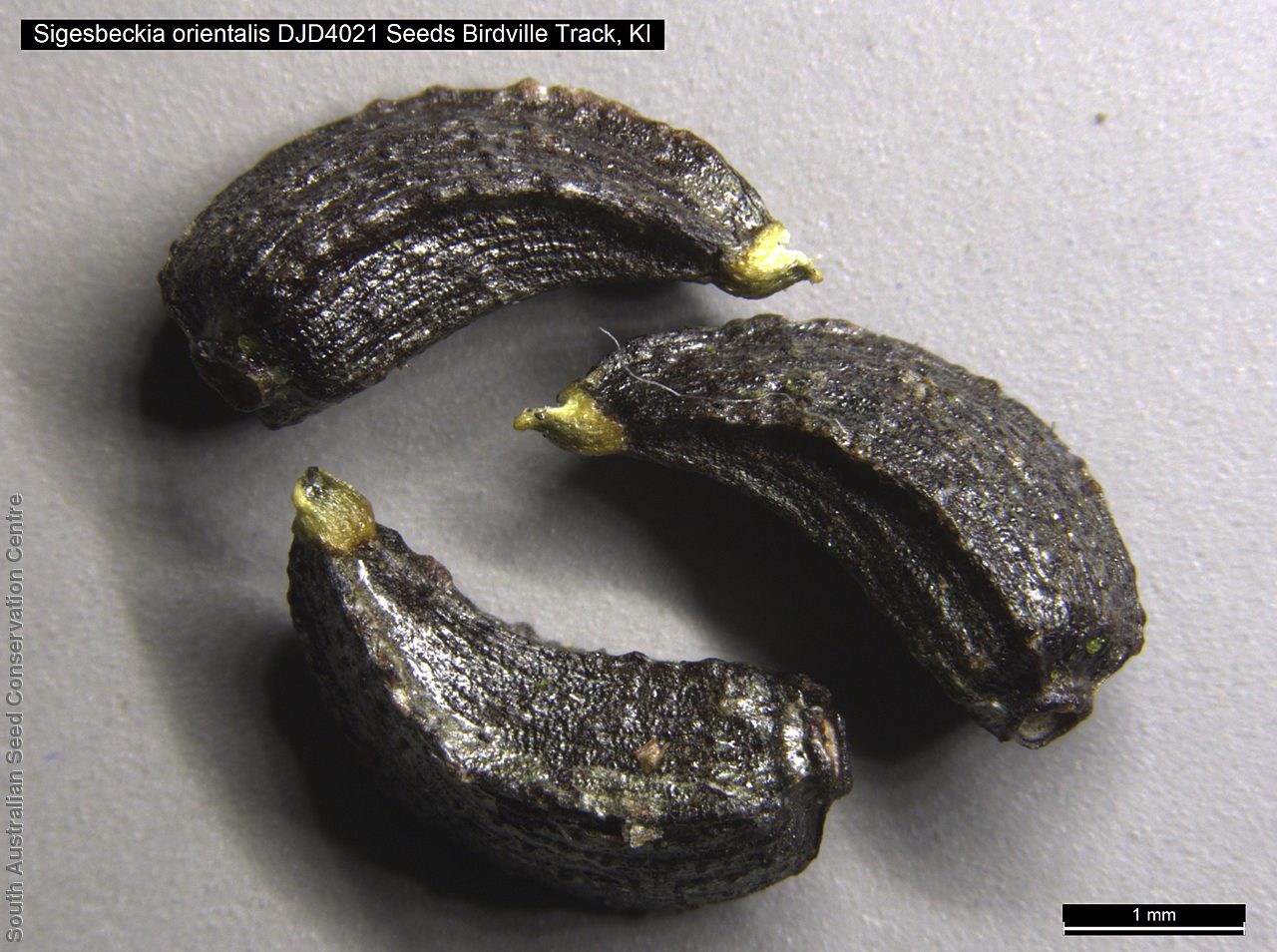
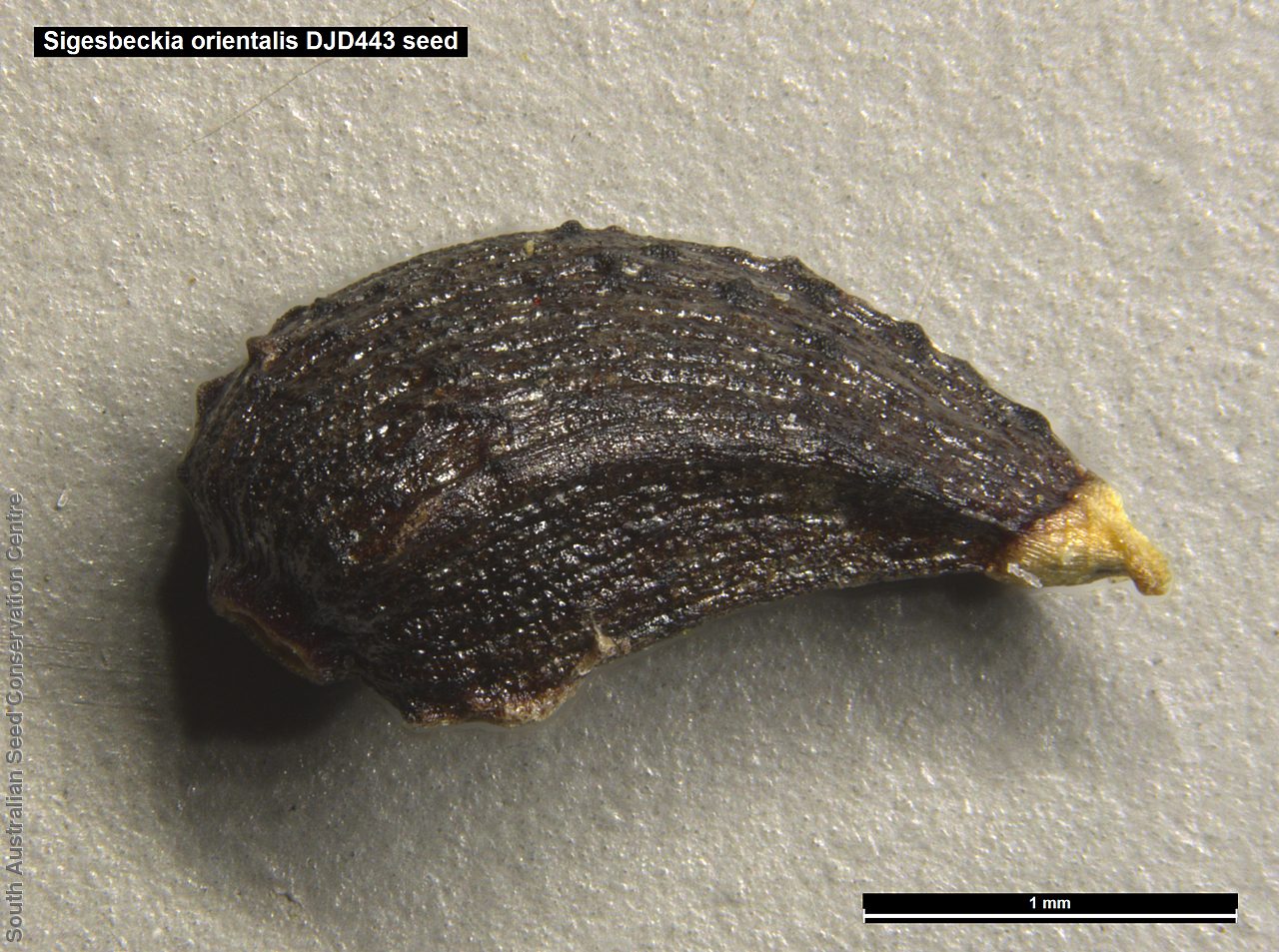
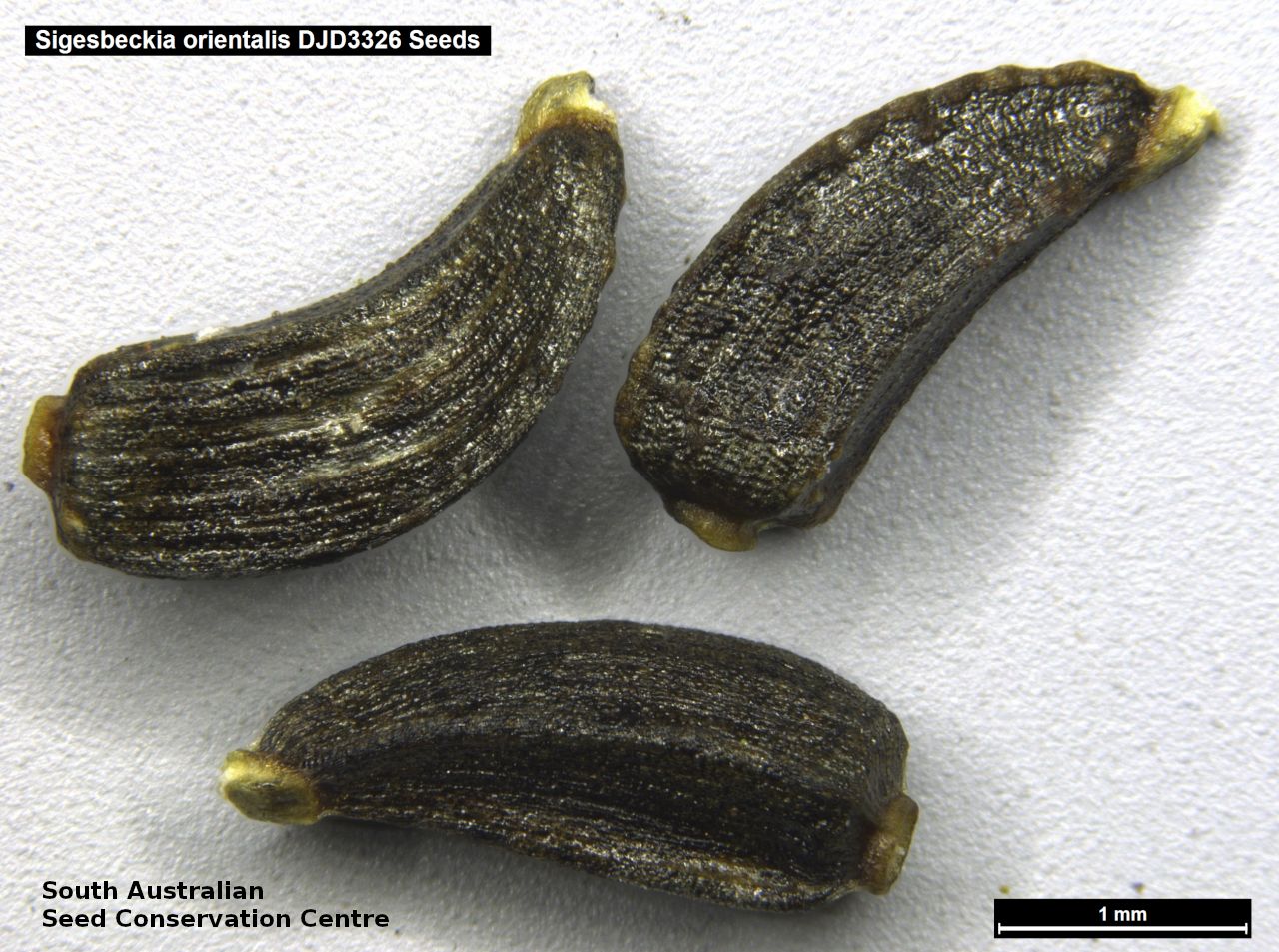
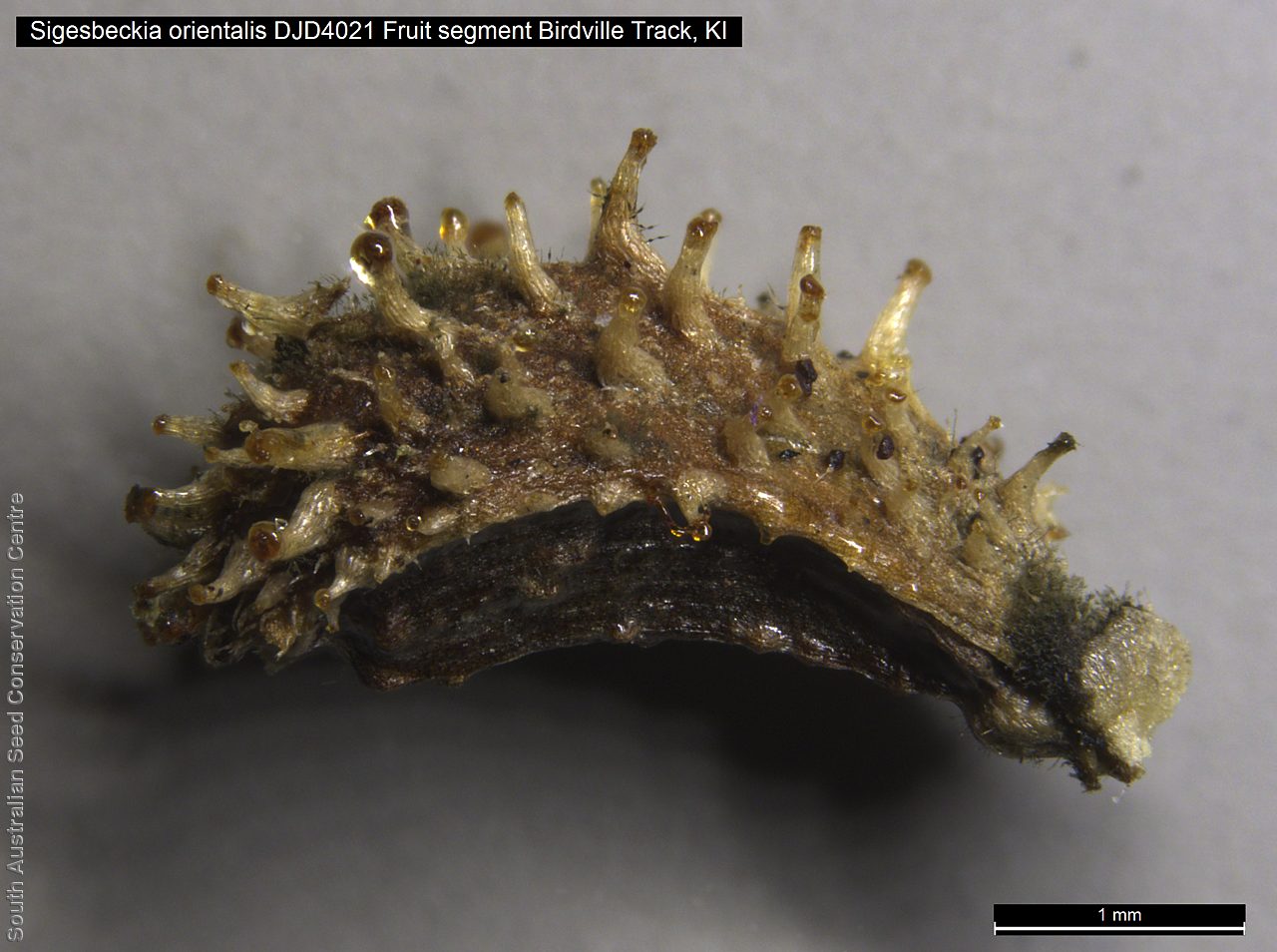
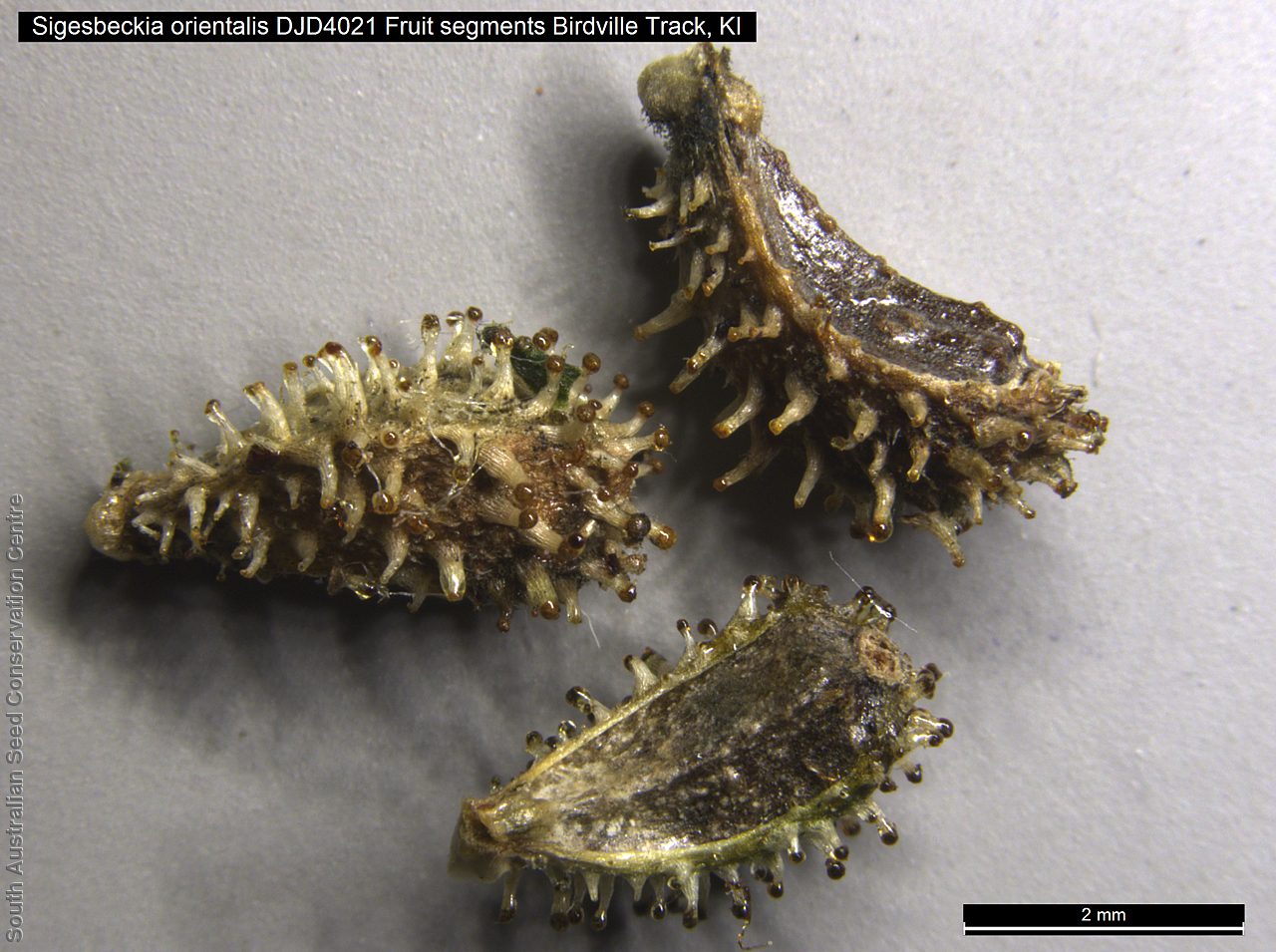

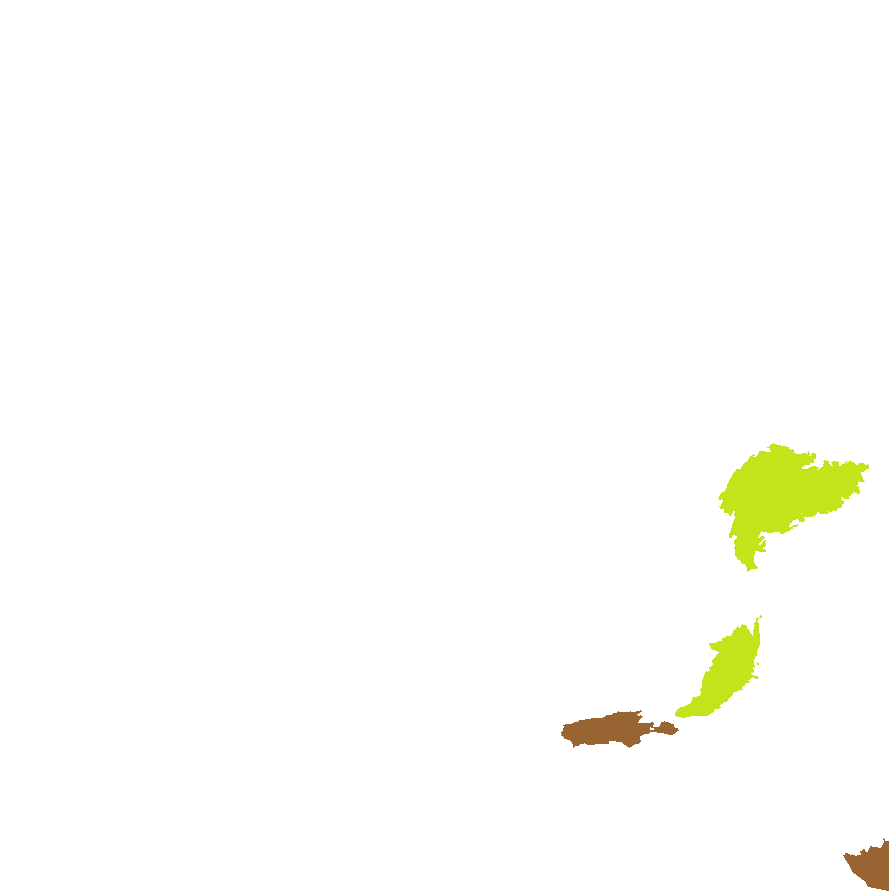
Botanical art
Prior names
Sigesbeckia orientalis ssp. orientalis
Sigesbeckia microcephala
Common names
Indian Weed
Oriental Sigesbeckia
Etymology
Sigesbeckia named after Johann Georg Siegesbeck (1686-1755), a German physician, botanist, director of the Botanical Gardens at St Petersburg and pronounced opponent of the Linian system, who named this small-flowered, unpleasant-smelling, grows in mud, weedy genus after him following their bitter rivalry. Orientalis from the Latin 'orientale' meaning eastern or of or from the Orient; alluding to the species distribution across Asia and Austrolasia.
Distribution and status
Found in the southern Mount Lofty Ranges and the lower South-east in South Australia, growing in seasonally moist sites in dryish vegetation. Also found in Queensland, New South Wales and Victoria (and Indian sub-continent, south-eastern Asia, Papua New Guinea). Introduced in Western Australia and Tasmania. Native. Uncommon in South Australia. Common in the other states.
Herbarium regions: Lake Eyre, Eyre Peninsula, Southern Lofty, Kangaroo Island, South Eastern, Green Adelaide
NRM regions: Adelaide and Mount Lofty Ranges, Eyre Peninsula, Kangaroo Island, South Australian Arid Lands, South East
AVH map: SA distribution map (external link)
Plant description
Erect herb to 80 cm high with slightly pubescent, brown stems. Leaves lanceolate to spear-shaped, to 15 cm long and 7 cm wide, in remote pairs, petiolate, pubescent, with glandular hairs, veins prominent, margins irregularly dentate or sinuate-toothed. Inflorescence in dense clusters (capitula) of sessile yellow flowers to 10 mm diameter with outer involucral bracts irregular, spreading, narrow-spathulate, to 11 mm long, densely covered with dark stalked glands. Flowers throughout the year. Fruits are green-black round fruit with numerous seeds in terminal clusters. Seeds are blackish slightly angled seed to 3 mm long and 1.2 mm wide, slightly striated surface with few tubercules.
Seed collection and propagation
Collect seeds between January and December. Collect fruit that are maturing, turning yellow and fat with hard seeds. Place the fruit in a tray and leave to dry for 1-2 weeks or until it begin to split. Then rub the dried fruit to dislodge the seeds. Use a sieve to separate any unwanted material. Store the seeds with a desiccant such as dried silica beads or dry rice, in an air tight container in a cool and dry place. From one collection, the seed viability was high, at 85%.
| Location | No. of seeds (weight grams) | Number of plants | Date collected | Collection number Collection location | Date stored | % Viability | Storage temperature |
|---|---|---|---|---|---|---|---|
| BGA MSB | 3,250 (3.85 g) 3,250 (3.85 g) | 40 | 29-Mar-2006 | DJD443 Southern Lofty | 14-Sep-2006 | 85% | -18°C |
| MSB | 10,760 (7.9 g) | 50 | 9-Feb-2007 | RJB71265B Southern Lofty | |||
| BGA | 7,000 (14.690 g) | 12 | 9-Apr-2021 | DJD4021 Kangaroo Island | 28-Jun-2021 | 100% | -18°C, -80°C |
| BGA | 1,000 (2.200 g) | 2 | 6-Apr-2021 | DJD4018 Kangaroo Island | 28-Jun-2021 | 100% | -18°C |
Number of plants: This is the number of plants from which the seeds were collected.
Collection location: The Herbarium of South Australia's region name.
% Viability: Percentage of filled healthy seeds determined by a cut test or x-ray.